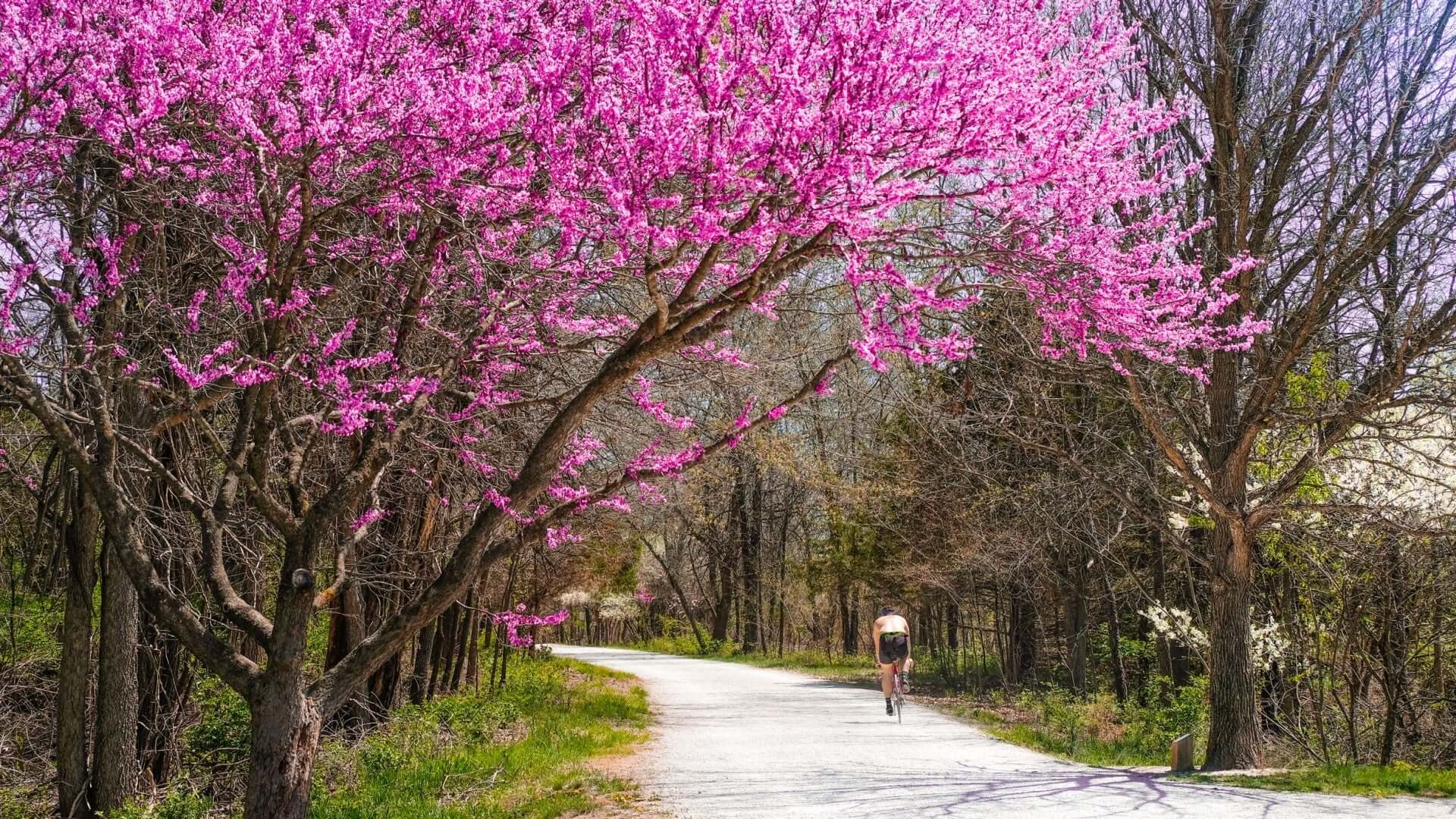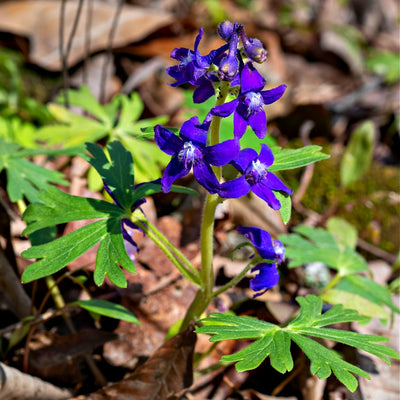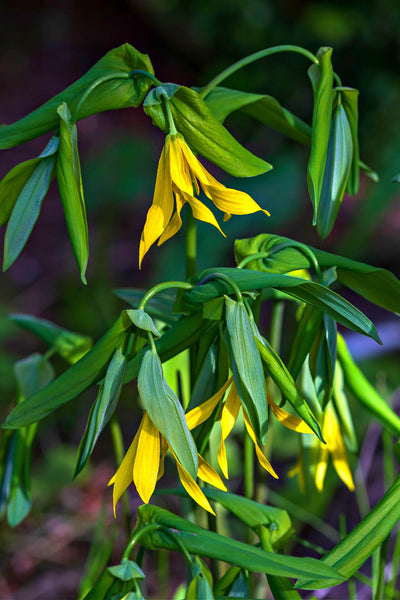Redbud Trees
Red Bud trees, called Judas trees or Mediterranean Red Buds, are a beloved and visually striking addition to any garden or landscape. These trees are scientifically known as Cercis Siliquastrum and are known for their beautiful blossoms ranging from pink to reddish-purple. These blossoms add a vibrant burst of color to gardens in early spring and are a sight to behold. Red Bud trees are ornamental and offer environmental advantages such as delivering shelter and food for birds and insects. In this complete guide, we will delve into the world of Red Bud trees and explore everything you need to know to plant, grow, and care for them properly to ensure their healthy development in your garden.
Red Bud trees belong to the genus Cercis and are deciduous trees native to southern Europe and western Asia. They are well-known for their distinctive heart-shaped leaves, which turn from reddish-purple to green as the season progresses. However, the highlight of the Red Bud tree is undoubtedly its breathtaking blossoms that appear in spring before the leaves. These flowers are a vibrant shade of pink to reddish-purple and typically grow in clusters, covering the tree in a captivating display.
Choosing the right location for planting a Red Bud tree is critical in ensuring its success. A well-aerated and well-draining soil is essential for these beautiful trees to thrive. When selecting a spot, it is imperative to guarantee that it obtains direct sunlight for at least 4-6 hours per day, with partial shade being an acceptable alternative. A location with good air circulation is crucial to maintaining healthy foliage and preventing disease. Remember that the right location is the foundation of a healthy and long-lasting Red Bud tree.
Creating a slightly acidic to neutral pH range of 6.0 to 7.0 is essential to prepare the soil for planting. This will help to avoid soggy roots susceptible to root rot.
When planting your Red Bud tree, dig a gap double as broad as the root ball and of the same depth, providing enough space for the roots to spread and establish themselves.
Planting Redbud Trees
Remember, the planting depth is critical. The top of the root ball should be level with the ground surface. Planting too deep can suffocate the tree's roots, which could cause severe damage. Choosing the right location for growing a Red Bud tree is critical in ensuring its success. A well-aerated and well-draining soil is essential for these beautiful trees to thrive. When selecting a spot, it is imperative to guarantee that it obtains direct sunlight for at least 4-6 hours per day, with partial shade being an acceptable alternative. A location with good air circulation is crucial to maintaining healthy foliage and preventing disease. Remember that the right location is the foundation of a healthy and long-lasting Red Bud tree.
Creating a slightly acidic to neutral pH range of 6.0 to 7.0 is essential to prepare the soil for planting. This will help to avoid soggy roots susceptible to root rot.
When planting your Red Bud tree, dig a gap double as wide as the root ball and of the same depth, providing enough space for the roots to spread and establish themselves.
Remember, the planting depth is critical. The top of the root ball should be level with the ground surface. Planting too deep can suffocate the tree's roots, which could cause severe damage.
Spread a coating of organic mulch around the tree's base to retain moisture and prevent weed growth. Water the tree deeply after planting to help settle the soil around the roots.
Adequate water is essential, especially during the tree's first few years of growth. Water your Red Bud tree deeply, ensuring the soil remains consistently moist but not soggy. During dry spells, consider deep watering every 2-3 weeks.
Red Bud trees typically have a naturally appealing shape, but some pruning may be necessary to remove dead or crowded branches. Prune your tree in late winter or before spring when it's still dormant.
These trees are generally low-maintenance, but you can involve a low-release fertilizer in earlier spring to support healthy growth. Follow the manufacturer's instructions for the appropriate dosage.
Watch for typical pests such as aphids, scale insects, and webworms. If necessary, treat infestations promptly to prevent damage to your Red Bud tree. Additionally, practicing good sanitation by removing fallen leaves and debris can help prevent disease.
Maintaining a 2-3 inch layer of organic mulch around the base of your Red Bud tree helps conserve moisture, regulate soil temperature, and reduce weed competition. Assure the mulch does not touch the tree trunk, as it can promote rot.
If you have young Red Bud trees, provide support against strong winds and ensure they are well-staked to prevent them from leaning or falling over.
Once established, Red Bud trees exhibit some drought tolerance. However, it's essential to continue watering during extended dry periods to maintain their health and vigor.
Think of applying a layer of mulch around the tree's base and wrapping the trunk with tree wrap to protect against frost cracks and winter damage in colder climates.
Incorporating Red Bud Tree Into Your Garden
Red Bud trees can be excellent additions to your landscape, offering aesthetic beauty and environmental benefits. Here are some ideas on how to incorporate them into your garden.
Centerpiece Tree: Plant a Red Bud tree as a focal point in your garden. Its vibrant spring blooms will captivate the attention of anyone who visits.
Understory Planting: Red Buds can thrive under taller trees, creating a lovely understory layer of color and interest in your woodland garden.
Mixed Borders: Combine Red Bud trees with other flowering shrubs and perennials for a harmonious mix of colors and textures.
Street Planting: These trees can be used in urban landscapes, lining streets or sidewalks, as they are relatively small and provide excellent spring beauty.
Wildlife Habitat: Red Bud trees attract pollinators like bees and butterflies with their abundant nectar. Their seed pods are also a food source for birds and wildlife.
While the Cercis Siliquastrum is the most common Red Bud tree, there are a few other popular varieties to consider.
Eastern Red Bud (Cercis canadensis): Native to North America, this variety features striking pink to purple blossoms and is more cold-hardy than its Mediterranean counterpart.
Forest Pansy (Cercis canadensis 'Forest Pansy'): Known for its burgundy foliage, this variety offers year-round beauty and striking pink blooms in the spring.
Lavender Twist (Cercis canadensis 'Covey'): This dwarf assortment has a teary habit, making it an excellent choice for smaller gardens or as a unique focal point.
Texas Red Bud (Cercis canadensis var. texensis): Native to Texas and nearby regions, this variety is adapted to hot and dry climates and boasts vibrant pink flowers.
Red Bud trees are moderate to fast growers, typically reaching a height of 20-30 feet with a spread of 25-35 feet in 10-15 years.
When is the best time to plant a Red Bud tree? The ideal time to plant a Red Bud tree is in the late fall or before spring when the tree is stagnant and the temperature is mild.
Do Red Bud trees require a lot of maintenance? Red Bud trees are relatively low-maintenance, but frequent watering, pruning, and safety from pests and diseases are necessary for optimal health.
Can I grow Red Bud trees in pots or containers? While Red Bud trees are best suited for planting in the ground, you can grow them in large containers for a limited time. Ensure the container provides adequate space for root growth and proper drainage.
Red Bud trees, enchanting spring blossoms, and graceful heart-shaped leaves are an excellent addition to any garden or landscape. By following the planting and care guidelines in this complete guide, you can enjoy the loveliness of Red Bud trees while contributing to your outdoor space's overall health and aesthetics. Whether you choose the classic Mediterranean Red Bud or one of its captivating varieties, these trees will become a cherished feature in your garden for years. Plant one today and watch your landscape burst into vibrant colors every spring.
Companion Plants For Redbud Tree
- Larkspur
- Bellflower
- Daisy




